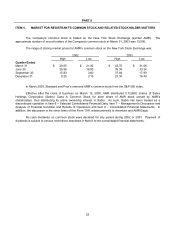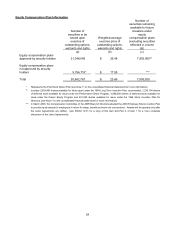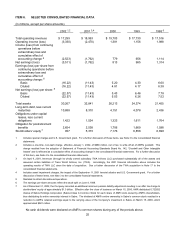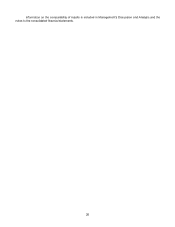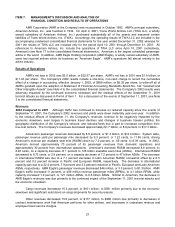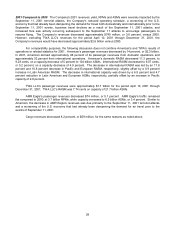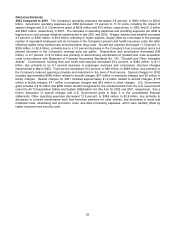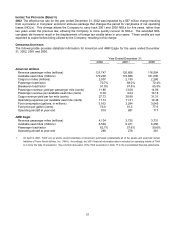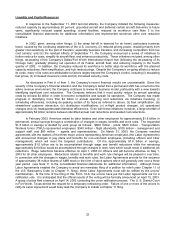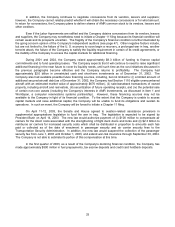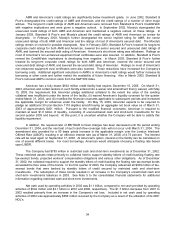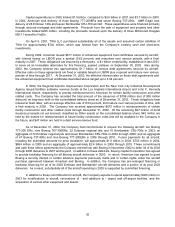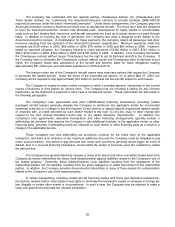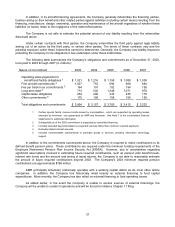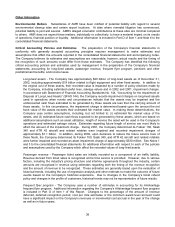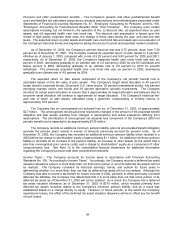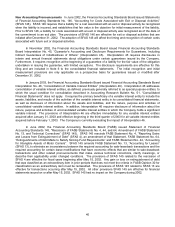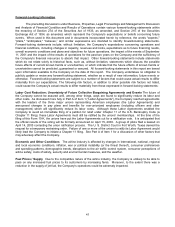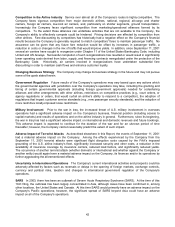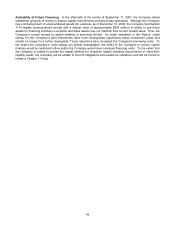American Airlines 2002 Annual Report Download - page 35
Download and view the complete annual report
Please find page 35 of the 2002 American Airlines annual report below. You can navigate through the pages in the report by either clicking on the pages listed below, or by using the keyword search tool below to find specific information within the annual report.33
In addition, the Company continues to negotiate concessions from its vendors, lessors and suppliers;
however, the Company cannot reliably predict whether it will obtain the necessary concessions or for what amount.
In return for concessions, the Company plans to deliver shares of AMR common stock to its vendors, lessors and
other creditors.
Even if the Labor Agreements are ratified and the Company obtains concessions from its vendors, lessors
and suppliers, the Company may nonetheless need to initiate a Chapter 11 filing because its financial condition will
remain weak and its prospects uncertain. The fragility of the Company’s financial condition is further illustrated by
the going concern opinion of the Company’s independent auditors (see page 47). Other negative factors include,
but are not limited to, the failure of the U. S. economy to soon begin a recovery, a prolonged war in Iraq, another
terrorist attack, the failure of the Company to satisfy the liquidity requirement in certain of its credit agreements, or
the inability of the Company to access the capital markets for additional financing.
During 2001 and 2002, the Company raised approximately $8.3 billion of funding to finance capital
commitments and to fund operating losses. The Company expects that it will continue to need to raise significant
additional financing in the near future to cover its liquidity needs, until such time as the cost initiatives discussed in
the previous paragraphs become effective and the Company returns to profitability. The Company had
approximately $2.0 billion in unrestricted cash and short-term investments as of December 31, 2002. The
Company also had available possible future financing sources, including, but not limited to: (i) a limited amount of
additional secured aircraft debt (as of December 31, 2002, the Company had Section 1110 eligible unencumbered
aircraft with an estimated market value of approximately $670 million), (ii) sale-leaseback transactions of owned
property, including aircraft and real estate, (iii) securitization of future operating receipts, and (iv) the potential sale
of certain non-core assets (including the Company’s interests in AMR Investments, as discussed in Item 1 and
Worldspan, a computer reservations systems partnership). However, these financing sources may not be
available to the Company in light of its financial condition. To the extent that the Company is unable to access
capital markets and raise additional capital, the Company will be unable to fund its obligations and sustain its
operations. In such an event, the Company will be forced to initiate a Chapter 11 filing.
On April 11-12, 2003, the Senate and House agreed to aviation-related assistance provisions in
supplemental appropriations legislation to fund the war in Iraq. The legislation is expected to be signed by
President Bush on April 14, 2003. The new law would authorize payment of (i) $100 million to compensate air
carriers for the direct costs associated with the strengthening of flight deck doors and locks and (ii) $2.3 billion to
reimburse air carriers for increased security costs which shall be distributed in proportion to amounts each has
paid or collected as of the date of enactment in passenger security and air carrier security fees to the
Transportation Security Administration. In addition, the new law would suspend the collection of the passenger
security fee from June 1, 2003 until October 1, 2003, and extend war-risk insurance through September 30, 2004.
The Company is not able to estimate its portion of this compensation at this time.
In the first quarter of 2003, as a result of the Company’s declining financial condition, the Company has
made approximately $500 million in fuel prepayments, tax escrow deposits and credit card holdback deposits.


